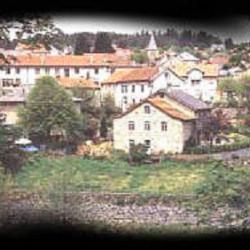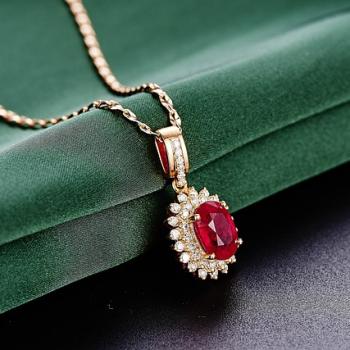
A Hebrew idiom proclaims, "A good man is pure olive oil." This is a high compliment for a tree and its products. But this isn't an ordinary tree. Olive trees have sustained and blessed generations since more than 2,000 years before Christianity and are considered as a valued gift of God to Israelites who were faithful.
The long, leaves of the olive tree, green on top and silver underneath, never change color. Its leafy branches extend far from its knotted trunk. They are abundant and beautiful.
Sturdy, Useful Tree
Olive trees are known for long, productive lives. Some still alive are estimated at 2,000 years. You can chop down an olive tree, but you can't kill it, as its roots will create new life. A Jewish tradition calls it "the tree of life." Some are more than 20 feet tall, about the height of an adult giraffe or a school bus. And they are thick with branches.
A widely respected olive scholar estimates that there are 800 million-plus of these trees on earth today, 90% of them in Mediterranean areas where conditions are ideal. In addition to food, fuel, and various uses for hygiene, this century has contributed lumber, from its extremely hard wood, and more advanced ointments and medicines than those in earlier times.
Multicultural Tree
Worldwide traditions have developed from olive trees and olive oil. Olive enthusiast Margaret Feinberg, author of several books on Christian topics, noted that olive oil was used with salt by Egyptians in "their mummifying process." She didn't mention how, so we'll have to use imagination on that one. This author also mentioned that the ancient Greek "Olympic flame" was from "burning olive branches," and the crowns for the champions were olive wreathes.
Olive oil was used anciently to light lamps, cook food, wash oneself, and treat wounds. These are still common uses today.
Today there is an International Olive Council with its specialized website that claims to offer "the world of olive oil." So that specialized olive product has its own world. The products of olive trees are shipped and consumed worldwide. Olives are commonly eaten in green or ripe form, and the Olive Council tells us olive oil is claimed by many to solve problems like dry skin, untamable hair, common sore throats, and minor wounds. They warn us against eating expired olive oil, but suggest using it for making useful things such as candles or even furniture polish.
Symbolic Tree
Olive trees and olive oil have even more symbols than uses. When Noah sent a dove to find out whether land was available and safe, the brave bird brought back an olive leaf. Christians today consider olive leaves and other parts as symbols of safety, peace, and forgiveness.
Many nations and cultures as well as religions look to the olive tree as a symbol of peace. To the ancient Greeks the olive tree was mentioned representing peace, with the addition of reconciliation and longevity—not surprising considering lifespans over a thousand years and refusing to die after ultimate mistreatment. Greek mythology presented a contest between Athena and Poseidon over a certain city. With the gift of the olive tree, the city became Athens.
The Bible is filled with Judeo-Christian symbols for olive trees and their parts and products. Psalm 52:8 introduced a beautiful, meaningful simile: "I am like a green olive tree in the house of God: I trust in the mercy of God for ever and ever." We remember olive trees in terms of God's mercy and our trust.
A Teaching Tree
With all those distinctive features, usefulness in the necessities of living, and widespread symbolism, obviously the tree of life has innumerable lessons for us. A few from the Bible and a few from modern Christians may be a helpful sample.
Paul had a lot to say about a lot of things, and olive trees were among them. In writing to the Romans (11:16-25), he addressed his gentile converts as branches grafted into the olive tree of Israel. Some of the "branches" of the tree had been broken and lost (in their unbelief), and Paul's gentile converts were being "grafted in among them, and with them partak[ing] of the root and fatness of the olive tree."
Paul warned his converts to stay firm in their faith; if the natural branches had been broken off, they could be as well: "continue in his goodness: otherwise thou also shalt be cut off." He added the possibility and joy of repentance: those who have strayed, "if they abide not still in unbelief, shall be grafted in: for God is able to graft them in again." With all this grafting going on, those ever-rejuvenating roots continue saving everything and everyone.
Many Christians today do their own teaching, as they find lessons for themselves in olive trees.
Writing on what she refers to as "healthy spirituality," Jean Wise, who speaks and writes widely on spirituality, explained more about the trees as she described her own application. Olive trees will have some "enormous" crops, but seldom for two years together. For many, abundant harvests may reoccur only after six or seven years of pruning and rest. She finds comfort: "They also remind me that we are called to bear good fruit our entire lives even as we grow older."
Another Christian author, Christine Caine, who has written more than 20 books on religious topics, reflected on the root system of the olive tree. The tree's heavy taproot, which anchors it, is surrounded by widespread shallow roots which give it stability. Such a system attracts water and nutrients from the soil so that olive trees can "flourish" in dry places. She added,
“They are naturally drought resistant, and can even regenerate after frost, fire, or disease. For example, a severe frost in Tuscany once destroyed many healthy olive trees, but in the spring, new shoots appeared and grew into fruitful trees. Such trees can live 500 years because of their hardy root system.”
Shifting her focus to "spiritual roots," she quoted Deuteronomy 29:18, “Be sure there is no root among you bearing poisonous and bitter fruit.” Turning to her personal application, she continued,
"Root can be a noun or a verb. We plant something by rooting it. When that plant anchors itself in the ground, we say it has rooted. To be rooted is to be ‘firmly implanted.’ Spiritually, to grow and mature in Christ, we need to be rooted in Christ."
PS—If on a trip to a Mediterranean area you happen to pass a 20-foot tall tree with a twisty trunk and many branches requiring a considerable walk around—with leaves that are green on top but silver if you get under them and look up, think of what it is and what it has contributed to Christianity, and show some respect.
2/21/2025 10:34:22 PM




